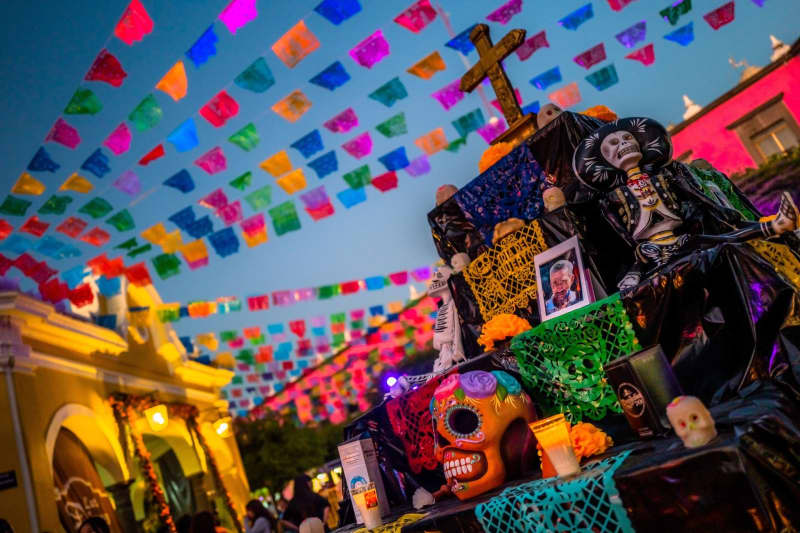El Día de los Muertos, or the Day of the Dead, is a deeply rooted Mexican tradition celebrated annually on November 2, designed for families to honor and welcome the souls of their deceased loved ones. This celebration finds its origins in pre-Hispanic indigenous cultures in Mexico, wherein death was perceived not as an end but as a transformative passage to Mictlán, the realm of the dead. Contrary to the binary moral dichotomy presented by Catholicism—where souls are sent to heaven or hell based on a moral compass—indigenous beliefs offered a more nuanced understanding of the afterlife, attributing eternal destinations based on the manner of death. Following Spanish colonization, there was a blending of indigenous customs and Catholic teachings that culminated in a unique form of Catholicism evident today, especially during the celebration of Día de los Muertos.
Central to this celebration is the Altar de Muertos, a spiritual centerpiece that varies in complexity from one level to seven levels, each representing a significant aspect of life and the afterlife. The structure is imbued with symbolism to signify the deceased’s journey and the elements needed for their reunion with the living. Commonly, altars are designed in either a two-level form, denoting heaven and earth, or a three-level elevation that introduces the concept of purgatory. In its most intricate form, a seven-level altar encapsulates the steps believed necessary to gain entry into the heavenly abode. The thoughtful arrangement of these levels and the offerings included plays a crucial role in guiding and honoring the spirits of loved ones who return for the celebration.
The offerings laid out on the altar are rich with symbols and meanings. The top level typically displays photographs of the deceased, facing away to catch only the reflections of their loved ones, fostering a connection across realms. The subsequent levels manage the souls’ preparation, with provisions like salt for purification and bread – known as “muertito” – that represents the Eucharist and is integral to the celebratory feast. Each level hosts distinct offerings such as the favorite foods and fruits of the deceased and personal items to evoke memories of their earthly lives. The inclusion of a cross made from seeds or fruits on the seventh level acts as a confluence of both indigenous and Catholic practices, firmly rooting the celebration in Mexico’s complex cultural tapestry.
Apart from essential offerings, altars are adorned with decorative elements that enhance their spiritual essence. Papel Picado, the colorful cut paper, symbolizes the ephemeral nature of life and death, while candles and lanterns illuminate the path for spirits, often arranged with traditional meanings based on color. Water, offered as refreshment for the weary traveler from the afterlife, embodies purity and life’s renewal, often complemented with items enabling the deceased to cleanse upon their arrival. Marigolds, or “cempasúchil,” are typically used in the decorations for both altars and graves, their vibrant scent believed to guide spirits to their respective altars.
Additional elements of celebration include sugary or ceramic skulls that not only serve as playful symbols of death but also remind participants of the ongoing relationship between the living and the dead. Alcoholic beverages favored by the deceased, such as tequila or mezcal, are also placed as offerings, reflecting their preferences and inviting them to partake in the joyful banquet being prepared. Furthermore, cherished items, particularly toys for children who have passed, reinforce personal connections and memories that linger in the hearts of those still living.
In essence, El Día de los Muertos is a vibrant tapestry of culture, spirituality, and remembrance interwoven through generations. The celebration invites participants to both honor and remember their past, offering insights into how communities view death not as an end, but as a continuum of love and memory. The marriage of indigenous beliefs and Catholic influence has given rise to a tradition where death is celebrated with joy rather than somberness, showcasing a rich cultural identity that persists amid a changing world. Each altar, with its unique combinations of offerings and symbols, reflects personal stories and collective histories, affirming the belief that those who have passed continue to inhabit the lives of the living, forever remembered and honored.

